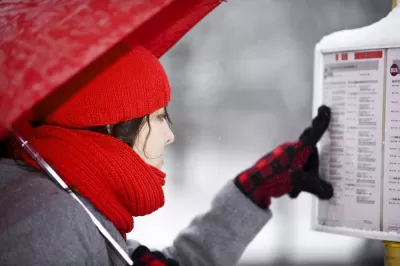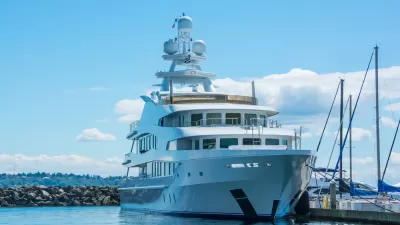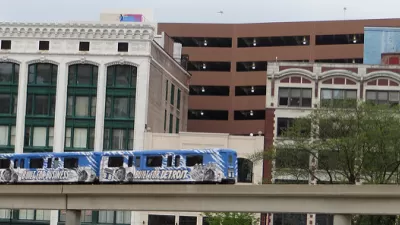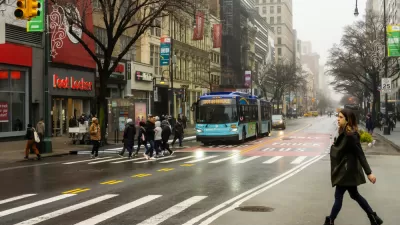Yonah Freemark gives less-than-stellar marks for the transit investments of U.S. cities in the 2010s.

"Cities across the U.S. added more than 1,200 miles of expanded transit service between 2010 and 2019," according to an article by Yonah Freemark. But that proclamation comes with an important caveat: "But all that construction isn’t keeping up with the need."
According to Freemark's survey, documented at the Transit Explorer website, U.S. cities collectively spent about $47 billion to add those 1,200 miles, adding plenty of transit considered by Freemark to be "something more than run-of-the-mill bus routes." The article includes a lot more detail on what Freemark means by transit service improvements—once broken down, however, the data shows that cities added about half of those new transit lines in the form of bus lines, and the other half in rail lines.
Freemark provides more detail about the rail service added in the past decade:
Of those rail projects, just 26 miles were in the form of metro investments—heavy-rail lines like new subways or elevated trains that often carry the most passengers through the densest parts of the country. And just 37 miles were in the form of streetcars, perhaps a surprising fact given the frequent discussion of that transportation mode’s deficiencies.
In terms of the new bus lines added in the past decade, Freemark concludes an unequivocally negative assessment: "American cities have underinvested in expanded quality bus lines."
Freemark took to Twitter to share the findings detailed in this article and to provide additional perspective on the country's transit investments:
From 2010–2019
BRT/ART
- US added 2 miles/million ppl
- France added 10.5 miles
Metros & light rail
- US added <1 miles/million ppl
- France added 3.5 miles
One country added transit riders, the other lost them. Guess which.https://t.co/If8jpZNVu3 pic.twitter.com/T7RYrqDOTU— Yonah Freemark (@yfreemark) January 7, 2020
FULL STORY: Too little, too late? A decade of transit investment in the U.S.

Maui's Vacation Rental Debate Turns Ugly
Verbal attacks, misinformation campaigns and fistfights plague a high-stakes debate to convert thousands of vacation rentals into long-term housing.

Planetizen Federal Action Tracker
A weekly monitor of how Trump’s orders and actions are impacting planners and planning in America.

Chicago’s Ghost Rails
Just beneath the surface of the modern city lie the remnants of its expansive early 20th-century streetcar system.

Bend, Oregon Zoning Reforms Prioritize Small-Scale Housing
The city altered its zoning code to allow multi-family housing and eliminated parking mandates citywide.

Amtrak Cutting Jobs, Funding to High-Speed Rail
The agency plans to cut 10 percent of its workforce and has confirmed it will not fund new high-speed rail projects.

LA Denies Basic Services to Unhoused Residents
The city has repeatedly failed to respond to requests for trash pickup at encampment sites, and eliminated a program that provided mobile showers and toilets.
Urban Design for Planners 1: Software Tools
This six-course series explores essential urban design concepts using open source software and equips planners with the tools they need to participate fully in the urban design process.
Planning for Universal Design
Learn the tools for implementing Universal Design in planning regulations.
planning NEXT
Appalachian Highlands Housing Partners
Mpact (founded as Rail~Volution)
City of Camden Redevelopment Agency
City of Astoria
City of Portland
City of Laramie





























